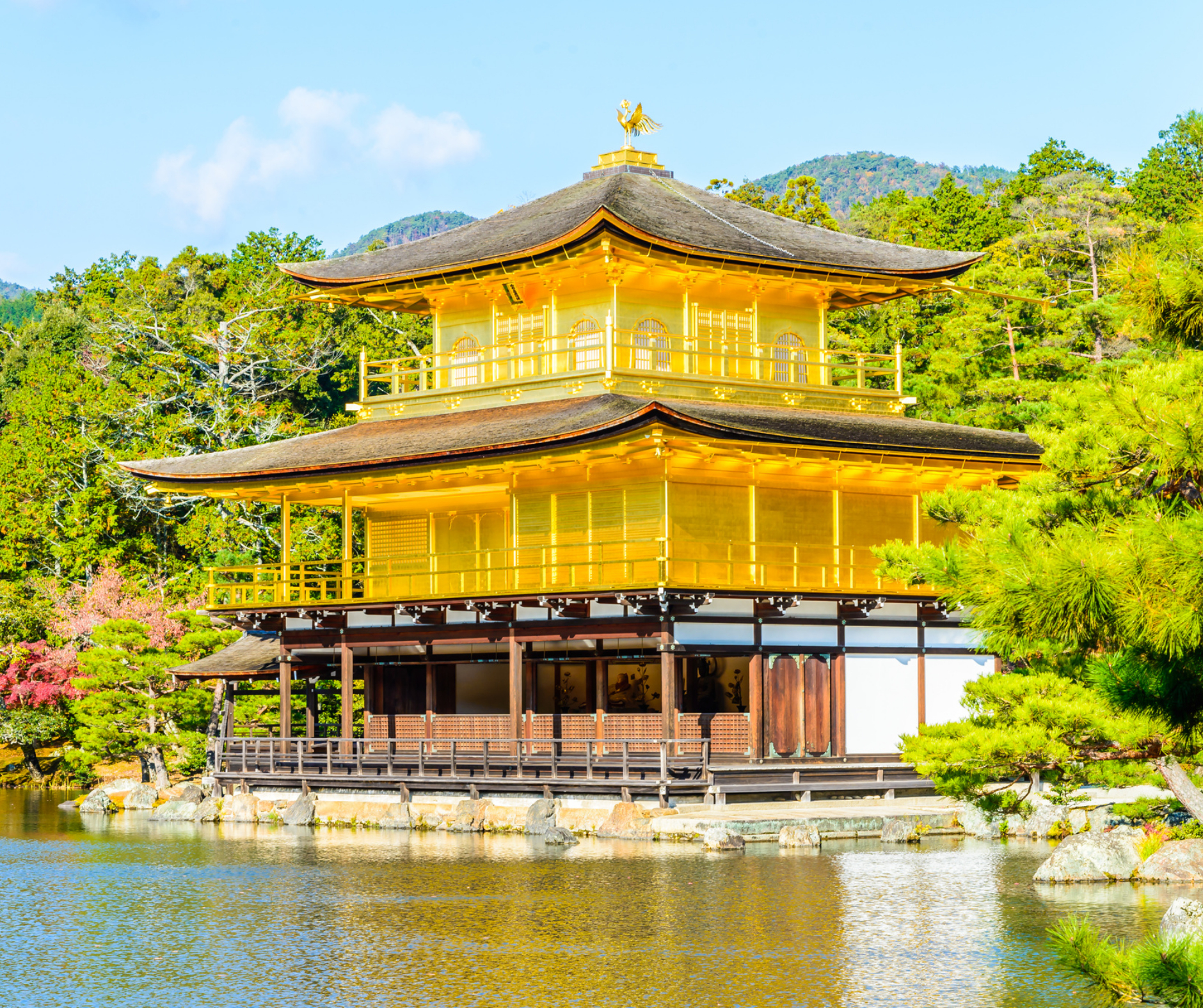Kinkaku-ji: A Golden Legacy, Where History Shimmers with Architectural Splendor and Symbolic Grace.
Kinkaku-ji, also known as the Golden Pavilion, is a famous Buddhist temple located in Kyoto, Japan. Its rich history, stunning architecture, unique aesthetic, and symbolic significance have made it one of the most iconic and beloved landmarks in the country. Let’s delve into its captivating story.
https://avtravel.com/tour/japan-in-autumn/
https://avtravel.com/tour/autumn-leaves-japan-korea/
History: Kinkaku-ji was originally built in 1397 as a retirement villa for Ashikaga Yoshimitsu, the shogun of the Ashikaga shogunate. Yoshimitsu intended the pavilion to become a place of solace and tranquility where he could immerse himself in the arts and practice Zen Buddhism. After his death in 1408, according to his will, the villa was converted into a Zen temple called Rokuon-ji.

Architecture: The architectural style of Kinkaku-ji is known as Kitayama-zukuri, which combines elements of traditional Japanese design with influences from Chinese architecture. The temple consists of three stories and features a distinct layered structure. The first floor is built in the Shinden-zukuri style, characterized by its open and spacious layout. The second floor exhibits the Bukke-zukuri style, with a more compact and residential design. Finally, the third floor, known as the Kukkyocho, is a Chinese-inspired Zen meditation hall topped by a golden phoenix.
Aesthetic: What sets Kinkaku-ji apart and gives it its name is the shimmering gold leaf covering the exterior of the top two floors. The upper stories are coated in gold leaf and adorned with intricate decorations, creating a breathtaking sight that reflects off the adjacent pond, enhancing the temple’s allure. The first floor, in contrast, is designed in a rustic and simple manner, representing the earthly world.

Symbols: Kinkaku-ji is laden with symbolism that reflects Buddhist, Shinto, and Zen philosophies. The gold leaf symbolizes the pursuit of enlightenment and the impermanence of material possessions. The phoenix perched atop the roof is a mythical creature associated with transformation, rebirth, and purity. Additionally, the temple’s positioning near a pond and carefully landscaped gardens reflects the concept of harmony between man-made structures and nature, a fundamental principle in Japanese aesthetics.
Despite its captivating beauty, Kinkaku-ji has faced several tragedies throughout its history. In 1950, a disenchanted monk set fire to the temple, resulting in its complete destruction. However, the temple was painstakingly reconstructed to its original splendor in 1955, adhering closely to the original design and incorporating historical records and photographs.
Today, Kinkaku-ji continues to attract visitors from all over the world who come to witness its ethereal beauty and experience the serenity of its surroundings. It has rightfully earned its place as a UNESCO World Heritage site and remains an enduring symbol of Japan’s cultural heritage, blending spirituality, architecture, and natural beauty into a singular masterpiece.
https://avtravel.com/tour/japan-in-autumn/
https://avtravel.com/tour/autumn-leaves-japan-korea/

